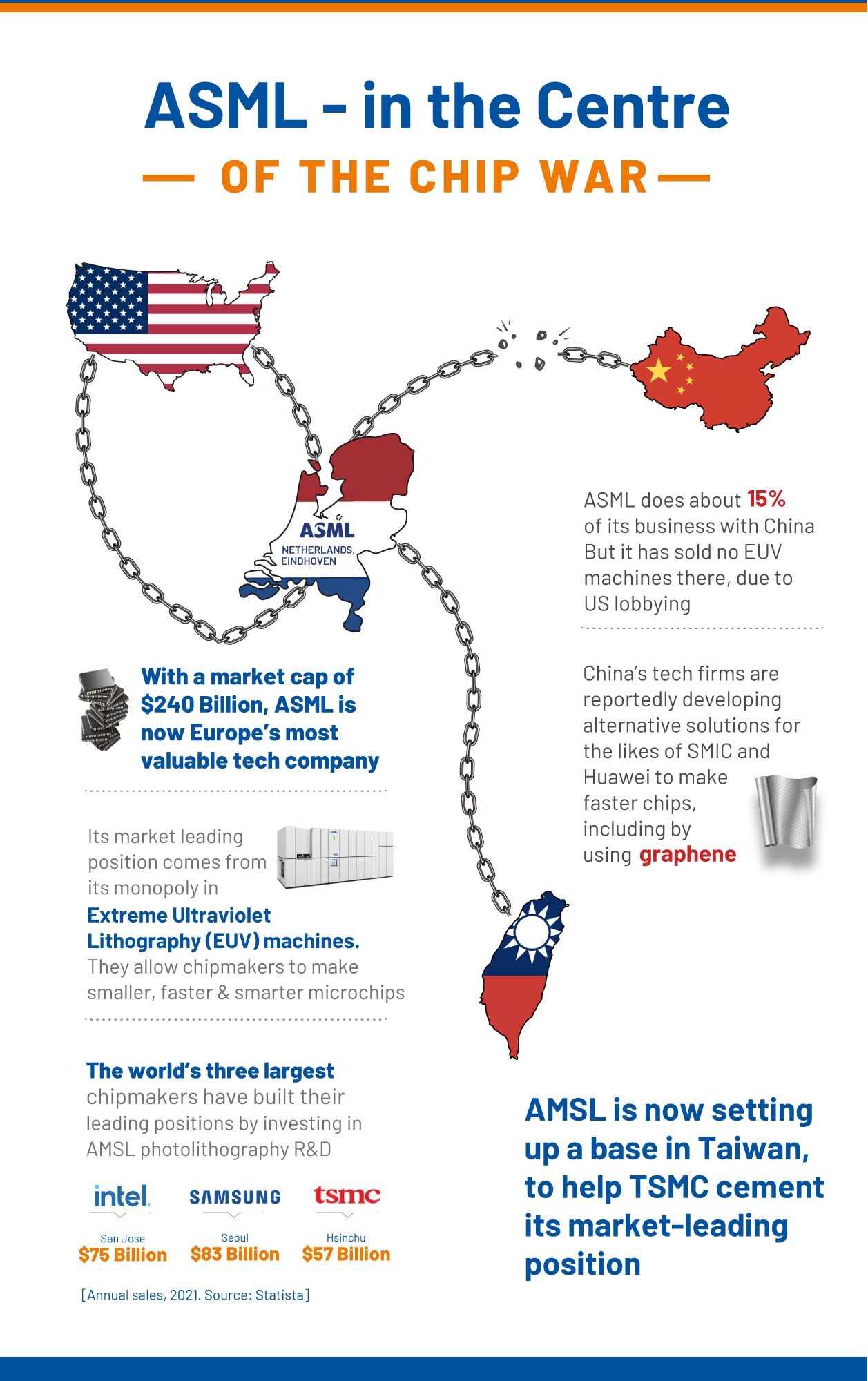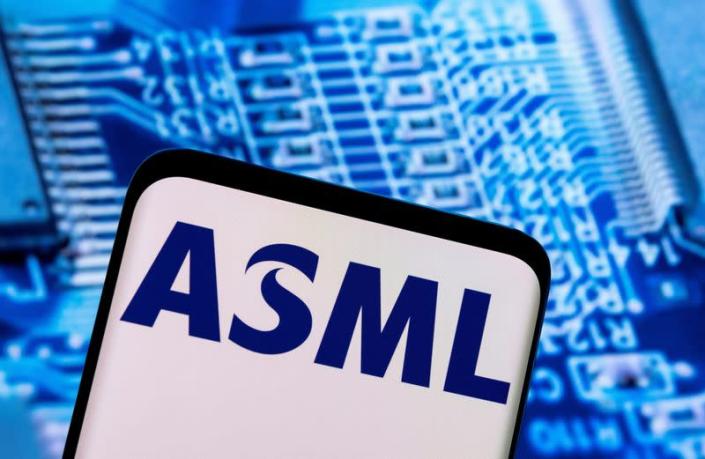The world’s most important semiconductor industry firm, ASML, is to set up a new base in Taiwan next year.
The Dutch maker of groundbreaking Extreme Ultraviolet Lithography (EUV) machines, which is now Europe’s most valuable tech company, is to start building a new plant in New Tapei City in July.
Governments and chipmakers around the world are fighting to secure deals with ASML, whose machines which print billions of transistors onto silicon wafers using extreme ultraviolet light are the only way to make the small and advanced chips critical to numerous industries.
Also on AF: China Gambles on Graphene to Win the Global Microchip War
The machines cost up to $200 million each and are the size of a double decker bus. The world’s best technology – artificial intelligence, smartphones, military weaponry, supercomputing and electric cars – cannot be made without them.
“ASML is expanding and growing worldwide as the semiconductor industry will double this decade,” ASML’s Head of Communications for Asia, Karen Lo, said.
Its new base in Tapei City will give it increased access to its biggest customer, Taiwan Semiconductor Manufacturing Co (TSMC), the manufacturer of cutting edge chips for Apple iPhones and Macs.
ASML Pushing Boundaries of Physics
ASML’s EUV machines use lithography to print extremely precise rays of light on to the chips at high volumes.
It uses ultraviolet light as thin as five strands of DNA, invisible to the human eye and absorbed by all natural substances, including air. The entire process has to happen in a vacuum.
This method allows more transistors to be printed on the chip, allowing them to become smaller over time, increasing performance and lowering energy consumption. For example, a single iPhone chip requires 10 billion transistors.
The groundbreaking EUV technique uses light rays almost 20 times thinner than the next best method, deep ultraviolet lithography (DUV), used by competitors including Japan’s Nikon.
Experts say it could take decades for a rival to catch up with ASML, CNBC reported, with the Dutch firm already securing exclusive deals with nearly 800 suppliers for EUV lithography.

ASML’s TSMC Tie-Up
Currently only five chipmakers can afford ASML’s EUV machines – Micron, SK Hynix, Samsung, Intel and Taiwan’s TSMC.
TSMC is ASML’s biggest customer, making up nearly 40% of its sales last year, and was the first chipmaker to deliver high volume chips using EUV technology. This has kept it ahead of the pack and it now produces over 90% of the world’s most advanced chips.
“We are not only growing our presence in the Netherlands, we also announced investments to support our growth in Wilton [US], Hwaseong [South Korea] and Linkou [Taiwan],” Lo said.
Meanwhile, ASML has not sold a single EUV machine to China, which does not have a licence to purchase the machines due to national security concerns following lobbying from Donald Trump’s US government in 2019.
US export controls passed by President Joe Biden in October then further hammered China’s semiconductor sector. Chinese chip firms cannot use advanced US chips, duplicate material combinations or employ US expertise.
As a result, Chinese companies are desperately exploring new ways to make chips including using graphene instead as they fall behind in the silicon market.
ASM’s Rags to Riches Tale
ASML began as an experimental wing of Dutch electronics giant Phillips in 1984, testing EUV and DUV lithography out of a small shed next to Phillip’s base in Eindhoven.
Since then its share value has grown by close to 400%. It is now Europe’s most valuable tech company, with a market cap of $240 billion.
Its first prototype Extreme Ultraviolet (EUV) lithography tool revolutionised the chip industry in 2010 and is still used today.
The Dutch firm has said it will release a new EUV machine in 2024, called the “high-NA EUV”. It will enable it to make the first 2nm chip, squeezing transistors onto an ever smaller surface to achieve ever faster processing speeds.
The machine will cost $300 million. And Taiwan’s TSMC is first in line.
- By Alfie Habershon
Read more:
China Files Complaint Against US Microchip Curbs to WTO
US Blacklists China Firms in AI Chip Sector, Russia Suppliers
China’s Potential Chip Stars Hit by Latest US Bans – FT





















